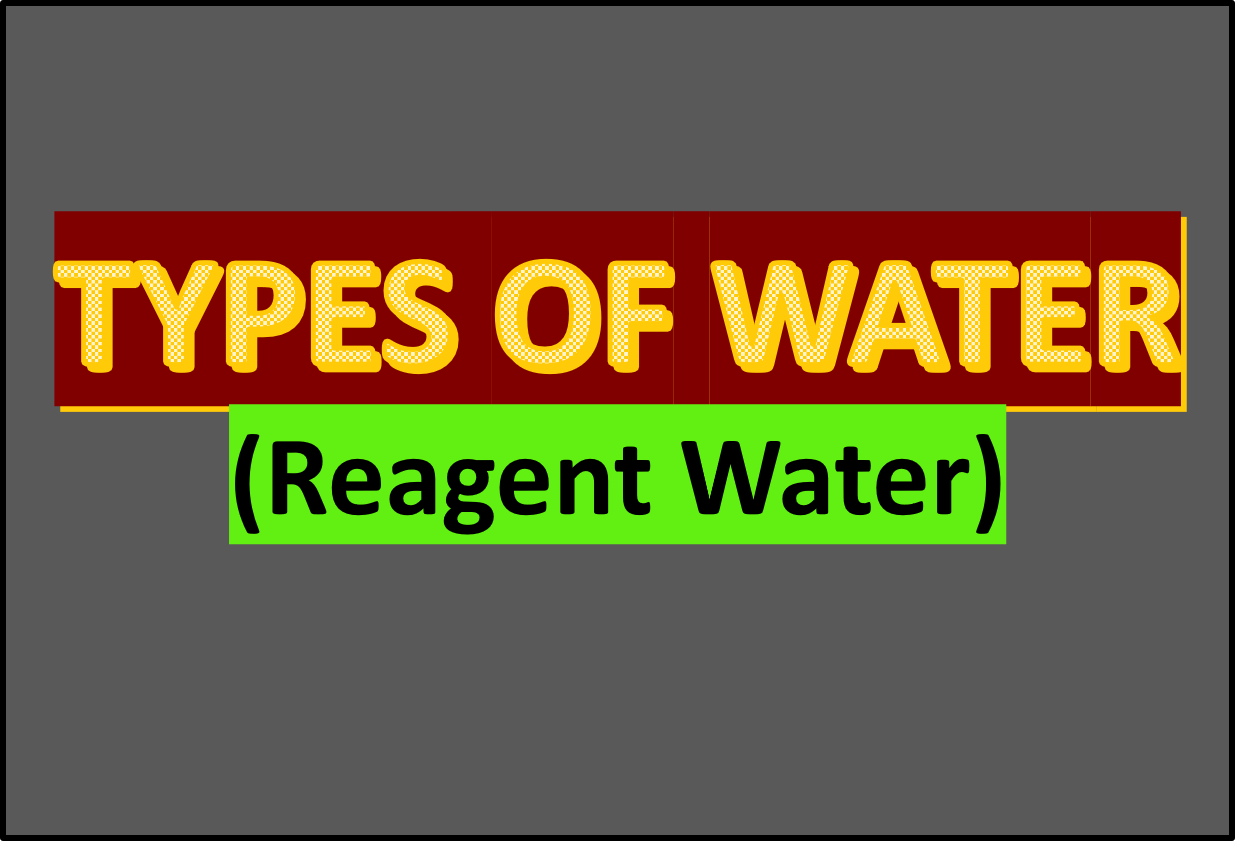Types of water- Comprehensive Information

This article describes about Types of water commonly used in the laboratory for analytical measurement process.
Types of water (Commonly known as reagent water)
Water Type Specifications as defined in ASTM D1193-91 (American Society for Testing and Materials)
Technical standards on water quality have been established by a number of organizations including the American Society for Testing and Materials (ASTM). Each water type has its own purity level and this reagent water is needed as a component of an analytical measurement process. All types of water from Type I water to Type IV water is defined by the ASTM International standard to have certain characteristics of resistivity (measured in MΩ-cm @ 25°C), conductivity (measured in µS/cm) and Total Organic Carbon (TOC) ppb or µg/L.
Four types of waters have been specified, with three additional grades that can be applied to the four types. The grade specifications specifically address contaminants of microbiological origin
Types of water
Type I – Type I water is defined by the American Society for Testing and Materials (ASTM) as having a resistivity of >18 MΩ-cm, a conductivity of <0.056 µS/cm and <50 ppb of Total Organic Carbons (TOC). this type of water is commonly used for the applications such as HPLC, gas chromatography, cell culturing, tissue culturing, mass spectrometry.
This types of water (TYPE I Reagent water) is prepared by distillation or other equal process, followed by polishing with a mixed bed of ion-exchange materials and a 0.2-µm membrane filter.
Type II – ASTM defines Type II water as having a resistivity of >1 MΩ-cm, a conductivity of <1 µS/cm and <50 ppb of TOCs. Essentially, Type II water is cleaner than Type III/RO water but not like Type I. Type II water is a good choice to feed to instruments and clinical analyzers because there is less calcium buildup, and it can also be used as feed water to a Type I system. Additional example applications include electrochemistry, sample dilution, radioimmunoassay and media preparation.
This types of water (TYPE II Reagent water) is prepared by distillation. Ion exchange, distillation, or reverse osmosis and organic adsorption may be required prior to distillation, if the purity cannot be attained by single distillation.
Type III – ASTM defines Type III water as having a resistivity of >4 MΩ-cm, a conductivity of <0.25 µS/cm and <200 ppb of TOCs. Less pure than Type I and II water, Type III water removes 90-99% of contaminants. It is produced using a Reverse Osmosis (RO) system directly from tap water, and is the starting point for many laboratory applications including glassware rinsing, media preparation, and other non-critical laboratory applications. In addition, Type III water is another reasonable choice as a feed water source to a system that produces Type I, ultrapure water.
This types of water (TYPE III Reagent water) is prepared by distillation, ion exchange, continuous electrodeionization, reverse osmosis, or a combination thereof, followed by polishing with a 0.45-µm membrane filter.
Type IV – ASTM defines Type IV water as having a resistivity of 200KΩ and a conductivity of <5µS/cm. Type IV water is most generally produced by RO and is used as feed water to a Type I or Type II deionized (DI) system.
This types of water (TYPE IV Reagent water) is prepared by distillation, ion exchange, continuous electrodeionization, reverse osmosis, or a combination.
When bacterial levels need to be controlled in reagent water, it should be further classified as follows:
| NA | Type A | Type B | Type C |
| Total heterotrophic bacteria Count max Cfu/ml | 1 | 10 | 1000 |
| Endotoxin max. Per ml | < 0.03 | < 0.25 | NA |
For more information on Types of water , refer to ASTM D1193-91
Glossary :
ASTM : American Society for Testing and Materials
PPB : Total Organic Carbon
RO : Reverse Osmosis



